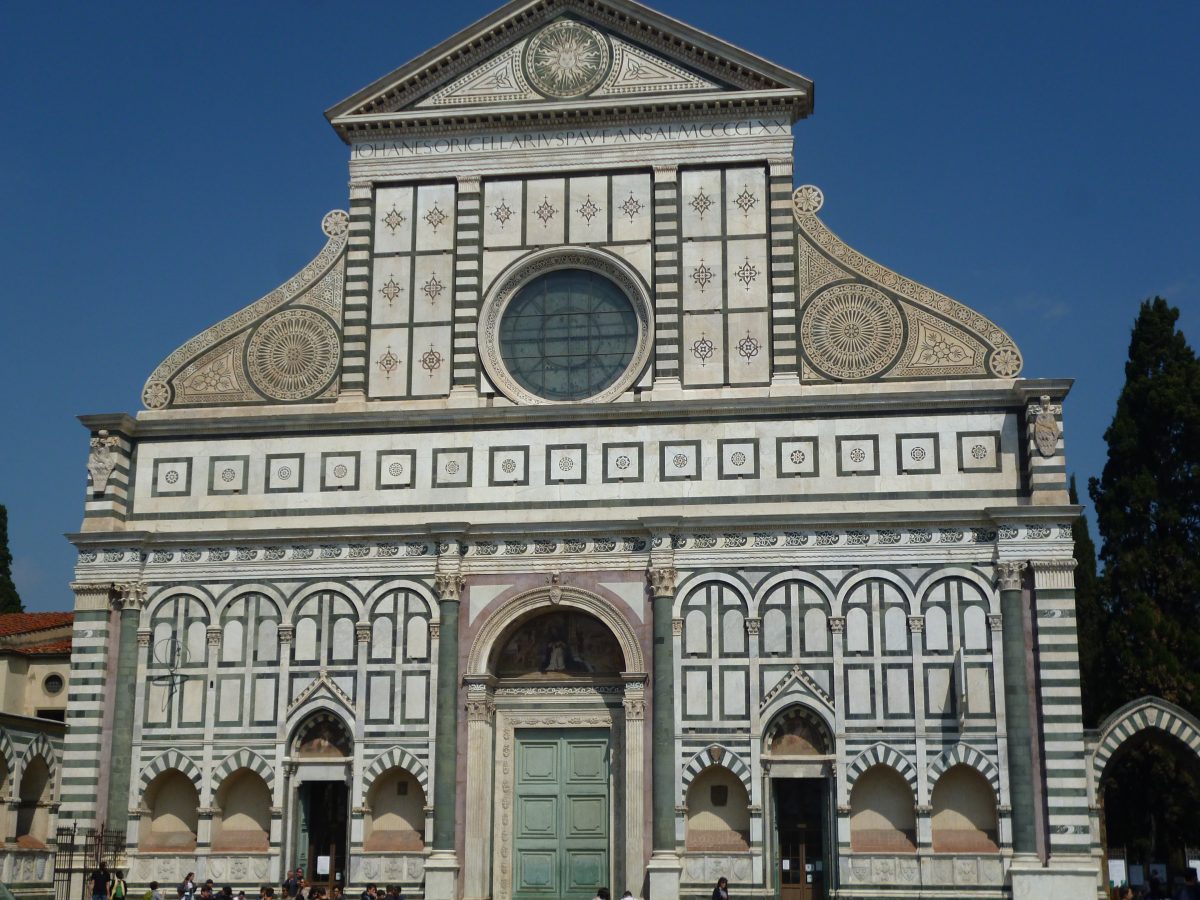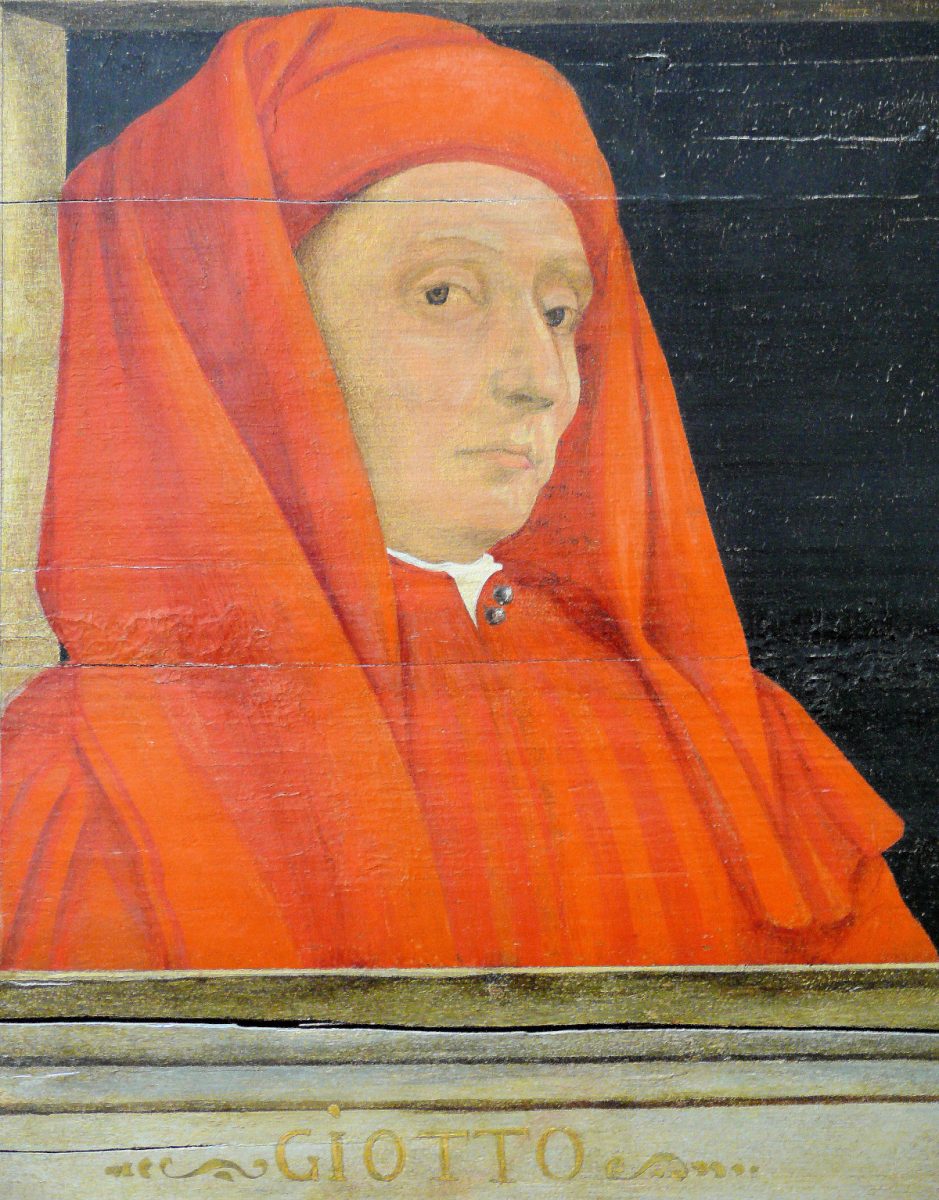Santa Maria Novella, the church next door to the railway station which is named after it, has an exotic history and this post recounts one or two highlights before listing the main things to look out for when you visit. Then, there’s a focus on the church’s role as the workshop which produced many of the city’s best-known artists in the 14th and 15th centuries. Brief biographies of Cimabue, Giotto and Fra Lippi are given, along with pointers on where to find their work.
a little history



The Dominicans began work on their stunning new church, Santa Maria Novella, in the late 13th century, but it wasn’t finished for nearly 200 years. A number of Florence’s richest families had paid for sections of it. The Rucellai family’s emblem of billowing sails can be seen on the church’s façade and the Strozzi Chapel is decorated with frescos commissioned by Tommaso Strozzi in 1350 in an act of repentance. As a banker, his practice of money-lending was disapproved of by the church. Another banker, Lorenzo di Medici’s uncle, a Tornabuoni, paid for a series of frescos around the altar, requesting they include portrayals of the women of his family, shown at the birth of the Virgin Mary
A major event held here in 1439 was the Council of Florence, which brought members of both the Latin and the Greek churches to the city to try and resolve their doctrinal differences. Suddenly Florence streets thronged with exotically dressed foreign bishops, from Greece, from Armenia and from Ethiopia, some of whom brought pet monkeys and colourful singing birds in cages. In 1566, Eleanor of Toledo arrived to marry Duke Cosimo di Medici and, in order to make her feel at home, the Cappellone degli Spagnoli, or Spanish Chapel was commissioned. It remains one of the most stunning parts of the church.
what to see



Apart from the church itself, don’t miss the Great Cloister, whose 56 bays are covered in frescos, or the Green Cloister, where the fresco cycle covering three of the four walls tell stories from the Book of Genesis. Wander the Cloister of the Dead to see numerous tombstones from many different periods and go inside the Spanish Chapel to admire the dazzling frescos which cover the terracotta walls in gold and bright jewelled colours. John Ruskin, the 19th century philosopher and art critic, who was a Florence devotee, picked it out as one of his very favourite places to visit in the city.
santa maria as an artists’ workshop
As soon as building began in the 13th century, artists and craftsmen came to Santa Maria Novella hoping for commissions. Gradually, a workshop evolved. Master painters took on apprentices, who first ran errands, then helped a little with filling in backgrounds and eventually, if they were good enough, took on more difficult tasks and became respected artists in their own right. Much of what we know about them comes from a book called The Lives of the Artists, by Giorgio Vasari, a collection of anecdotes and biographies published in 1550. Here’s a little detail on three of the artists connected to Santa Maria Novella.
cimabue



Born in about 1240, Cimabue was sent by his father to Santa Maria Novella to be educated and learn to read. He became fascinated by the painters he saw at work and began to copy them, proving so talented that he was taken on as an apprentice. He travelled to Pisa and Assissi, before returning to Florence to paint the Virgin for Santa Maria Novella, of which an admiring Vasari wrote that it ‘was carried in solemn procession, with the sound of trumpets, from his house to the church.’ His other well-known works are elsewhere in Florence: a crucifix in Santa Croce (see last episode) and a beautiful Madonna, painted on a gold background and now in the Uffizi.
Giotto



As a child, Giotto di Bondone scratched drawings onto flat stones to amuse himself until one day he was spotted by Cimabue and taken on as his apprentice. His style was new. Previous artists had painted representational figures, but Giotto’s subjects were much more lifelike, seemingly real people with personalities. His fame spread and the pope sent a courier to the workshop to ask for a painting from Giotto. Giotto is said to have painted a perfect circle, freehand in red paint and when asked if it was a joke, to have replied ‘That is enough and more.’ He got the commission, travelled to Rome and was paid 600 gold ducats to paint pictures in St Peter’s Church.
Back in Florence, he designed the campanile (bell-tower) for Florence Cathedral, for which he received, as Vasari recounted, ‘the honour of citizenship of Florence and a pension of a hundred gold florins.’ His luminously beautiful crucifix hangs in the nave of Santa Maria Novella, his portrait of Dante is in the Bargello Museum and his work can be seen in no fewer than four different chapels at Santa Croce. Vasari tells us that ‘Lorenzo di Medici much admired the talent of this distinguished man’ and saw to it that when Giotto died in 1337, a bust of him was sculpted in marble and placed in the cathedral.
lippi and lippi, father and son



Filippo Lippi abandoned the priesthood to become an artist and led a turbulent life which is recounted in more detail the podcast, but which can be illustrated briefly by the story of his commission to paint an altarpiece. He chose a young nun as his model, seduced her, then ran away with her. They had several children together, including a son, Filippino, who was also a painter when he grew up. Filippo painted a series of beautiful madonnas and worked on cathedrals in Padua and other Italian cities. His son painted the fresco series in the Strozzi Chapel here at Santa Maria Novella.
Listen to the POdcast
reading suggestion
Lives of the Artists by Giorgio Vasari
links for this post
Previous episode Santa Croce
Next episode Meet the Medici Family and their Art
Last Updated on June 11, 2023 by Marian Jones





